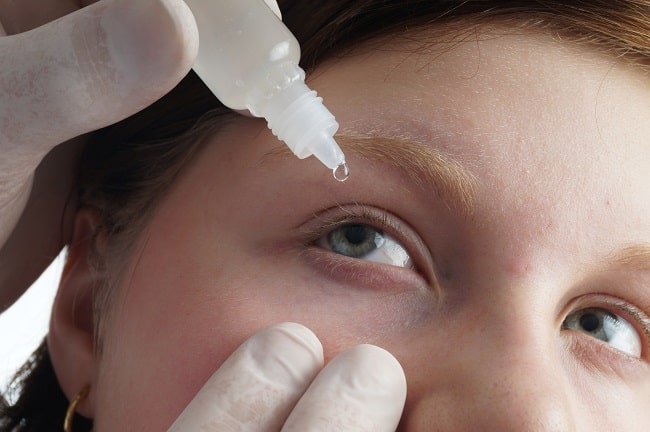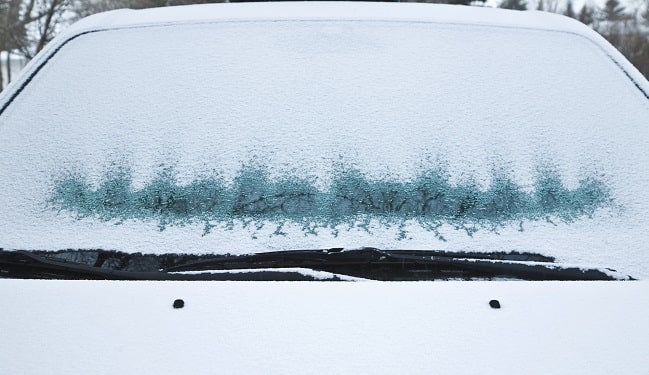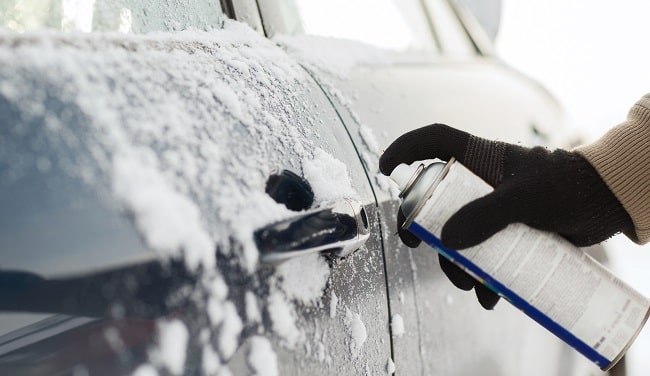WD40 is magical stuff that, according to some, has many different survival uses, which is why we included it in our list of non-food survival items to stockpile.
We all know that WD40 can loosen rusty hinges, clean tools, and make firewood easier to chop, but there is a host of other questions that rarely get the attention they deserve.
Here, we’re going to answer those questions and give you a deeper understanding of what WD40 can be used for and a few things it shouldn’t.
#1 What Happens If You Eat WD40?
According to the WD40 Safety Data Sheet, swallowing this product could cause “gastrointestinal irritation, nausea, vomiting, and diarrhea.”
If ingested, it may also enter the lungs, causing chemical pneumonitis, which is as horrible as it sounds. As your lungs become irritated and inflamed, so you’ll start to feel like you’ve contracted a bad case of flu.
A small shot of WD40 probably won’t cause too much damage but, if you spray half a can into your mouth as Quora user Rajesh Ravindran Pillai once did, you could end up damaging your parathyroid gland. This can cause abnormal levels of calcium in the blood, leading to kidney stones and the painful surgical procedures needed to remove them.
I wouldn’t recommend eating it but, if you do accidentally swallow some, do not induce vomiting. Instead, call either a physician, a poison control center, or the WD-40 Safety Hotline on 1-888-324-7596.
#2 What Happens If You Get WD40 In Your Eye?

WD40 is an irritant and, if it gets in your eye, it will cause aggravation, and your eyes will start to water. Fortunately, that’s about as bad as it will get unless you have a pre-existing medical condition.
A shot of WD40 to the eye when you’ve got a stye or are suffering from conjunctivitis is going to hurt, but it won’t make you blind. It also means your eyelids won’t squeak when you blink anymore!
To get rid of the symptoms, flush your eyes with lots of water for about 15 minutes, or until the irritation subsides.
#3 Does WD-40 Melt Ice?

Although WD40 can de-ice a frozen lock, it can’t melt ice. If you do need to instantly melt ice or snow, sprinkle a little salt over it. This will lower the ice’s freezing point, allowing it to melt at a lower temperature. Baking soda, sugar, and vinegar all perform this same task, just not as effectively as salt.
#4 At What Temperature Does WD40 Freeze?
According to the WD40 technical data sheet, the freezing or pour point for WD40 is -63 ̊C or -81.4 ̊F. This is the point at which it loses its ability to flow.
There are a few that disagree with this, claiming that a WD-40 representative advised them that “The freezing point of WD-40 is -50 degree F,” but it’s probably best to go with the official statistics.
This is great news for survivalists across the USA. The coldest temperature recorded in the US was just -80 ̊F so, no matter what the weather, your WD-40, or WD-40 substitute, will still be usable.
#5 At What Temperature Should WD-40 Be Stored?
WD40 should be stored below 120 ̊F, in a well-ventilated area, out of direct sunlight. WD40 is a combustible fluid and should not be exposed to temperatures exceeding 50°C/122°F. You should also keep it away from any heat sources, sparks, and other forms of ignition.
#6 Is WD-40 A Good Lock De-Icer?

Many people swear by WD40’s efficacy as a lock de-icer. They firmly believe that spraying a small quantity into the lock mechanism before a freeze will help prevent moisture from entering and causing the lock to stick.
Some even go as far as to say that you should remove the whole mechanism before applying WD40 so you can get complete coverage and a higher degree of protection.
Others claim that WD40 will dry out inside the lock or attract dirt, both of which could mechanisms inside the lock to stick. Over time, the spray may cause the pin tumbler locks in padlocks and doors to age prematurely.
Although there are many different uses for WD40, it was originally developed to protect the outer skin of the first intercontinental ballistic missile from rust and corrosion. In other words, it wasn’t designed as a de-icer or even as a lubricant.
Whether it works as de-icer or not appears to be a matter of opinion and, as I live in a place where it never freezes, I won’t presume to advise you any further.
#7 Can You Use WD-40 On A Car Windshield?
WD40’s UK website states, “We don’t recommend using WD-40 on your windows or windshields.” Despite that, hundreds of other sites recommend doing exactly that. According to them, it helps remove sticky substances from your windshield and prolong the lifespan of your windscreen wipers.
WD-40 can also be used to protect your number plate from ice and rust.
Is WD-40 Corrosive?
No. WD-40 contains anti-corrosion agents. It helps prevent rust and other forms of corrosion by displacing water.
#8 Can I Use WD-40 In My Oven?
WD-40 can remove grease and prevent it from building it. Spray WD-40 directly onto your oven door and racks, and then use a damp sponge to remove the dirt and grease. Once clean, spray it again to prevent further build-up.
You’ll now have a clean oven, but everything you cook in it will smell and potentially taste, like WD40.
#9 How Do You Get The WD-40 Smell Out Of An Oven?
Wiping your oven down with half a lemon will get rid of the awful smell of WD40 but will also remove the spray that you’d put on to prevent grease from accumulating.
To clean your oven while leaving the WD40 to its job, try this method:
- Mix a liter of water with one cup of vinegar;
- Pour the mixture into a baking dish;
- Preheat the oven to 200°C or 400℉;
- Place the dish on the lowest rack;
- Leave for approximately one hour.
As the mixture evaporates, it absorbs the unpleasant aromas, leaving your oven odor-free.
#10 Why Does WD40 Kill Bugs?
WD40’s ability to kill all kinds of insects, spiders, and cockroaches is widely celebrated, but few seem to have figured out why it’s so effective.
According to one hypothesis, as WD-40 displaces water, it can penetrate the insect’s internal organs, causing them to drown. This seems somewhat unlikely, but I’m not enough of a scientist to figure out why.
On the other hand, one of the warnings that WD-40 comes with is that high concentrations can cause headaches, dizziness, and nausea. Intentional abuse may even prove fatal. If a substance can have that kind of effect on a human, it’s no wonder it kills bugs!
#11 Can WD40 Cure Arthritis?
Every year, another story crops up about WD40 being effective against arthritis. Spray it onto your stiff joints, and you’ll be skipping about like a spring chicken in no time.
This isn’t true, of course, and WD40 is anxious to dispel the myth, saying it
“does not recommend the use of WD-40® for medical purposes and knows no reason why WD-40 would be effective for arthritis pain relief.”
Conclusion
WB40 is a handy product to have in your home and your bug-out bag. It has a wide range of uses but not quite as wide as some would have you believe.
By all means, use it to lubricate squeaky doors, prevent rust, and remove grease but please, whatever you do, don’t eat it or try spraying it on yourself.
Also see our list of WD40 alternatives.


It should not be used as a lubricant. It has solvent properties and it is highly viscous. As a result it can penetrate into many mechanisms, and the solvent will damage the contents (as was learned, the hard way for many, in regards to firearms where it penetrated the primer and rendered the priming compound ineffective). So, let us not refer to it as a lubricant, to prevent its use where it will actually damage. The same as ammo, it should not be used on lock mechanisms, because it will react with the actual lubricant present and render the mechanism unprotected. For routine locks, I recommend powdered graphite…it is nonsoluble in water, will not freeze, and is highly lubricious.
I hate to tell you this but my husband & father used this for many things with no adverse effects on metal! We used it for squeaky doors at work and various other things even car locks & regular door locks and it never did any harm!! I’m 70 soon and I remember my dad using this when I was a young girl! So it’s whatever you’re comfortable with! I used graphite it’s messy and only has limited uses!